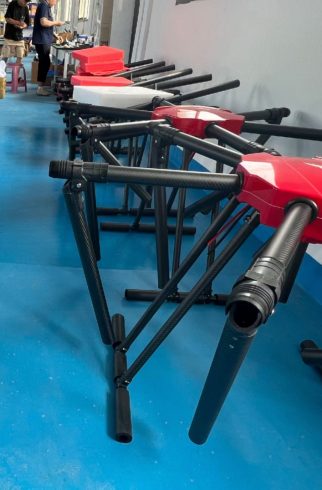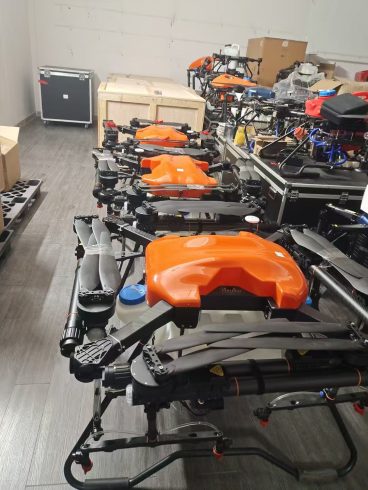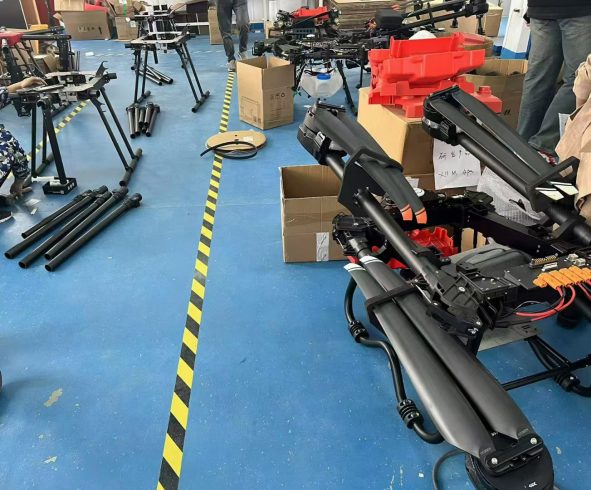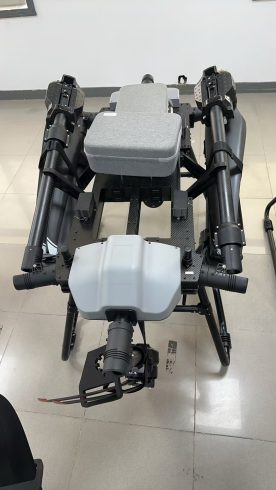![图片[1]-Weather Impact on Drone Spraying: Strategies for Optimizing Agricultural Efficiency in Challenging Conditions-msoen](https://www.msoen.com/wp-content/uploads/2025/04/cf792326a8203530-1024x1024.png)
Explore how weather conditions like wind, rain, and temperature affect drone spraying performance. Learn actionable strategies to mitigate risks and enhance crop protection efficiency in variable climates.
Weather Impact on Drone Spraying: Strategies for Optimizing Agricultural Efficiency in Challenging Conditions
Drone sprayers have revolutionized precision agriculture by enabling targeted, efficient crop management. However, weather variability remains a critical challenge, influencing spray efficacy, safety, and operational costs. From wind disrupting application patterns to rain diluting chemicals, understanding weather’s impact is essential for maximizing returns. This article unpacks the relationship between weather and drone spraying, offering practical solutions to navigate these challenges.
The Critical Role of Weather in Drone Spraying Success
Weather conditions directly affect three core aspects of drone-based crop management:
- Spray Deposition: Wind, humidity, and rain alter how chemicals settle on crops.
- Operational Safety: Turbulence, lightning, or extreme temperatures risk drone malfunctions.
- Chemical Efficacy: Environmental factors influence pesticide absorption and persistence.
Farmers must balance the urgency of crop protection with the need to avoid costly errors caused by weather-related disruptions.
Key Weather Factors and Their Impacts
- Wind Speed and Direction
- Impact:
- Winds exceeding 10–12 mph (16–19 km/h) disrupt spray drift, leading to uneven coverage or off-target contamination of non-crop areas.
- Gusts create turbulence, destabilizing drones and reducing nozzle accuracy.
- Solutions:
- Use drones with adaptive wind algorithms to adjust flight paths and nozzle pressure in real time.
- Schedule spraying during calm periods (e.g., early morning or late afternoon lulls).
- Rainfall
- Impact:
- Raindrops wash away freshly applied chemicals, reducing efficacy and increasing waste.
- Humidity from rain creates droplet coalescence, causing larger spray particles to fall prematurely.
- Solutions:
- Integrate real-time weather forecasts into flight planning software to avoid rain events.
- Opt for hydrophobic chemical formulations that resist wash-off.
- Temperature Extremes
- High Heat:
- Accelerates chemical evaporation, reducing droplet size and absorption.
- Strains drone batteries, shortening flight times by up to 30% in extreme heat.
- Low Temperatures:
- Thickens pesticide formulations, clogging nozzles and reducing flow rates.
- Lowers battery efficiency, increasing the risk of mid-flight power failures.
- Solutions:
- Select temperature-stable pesticides designed for specific climates.
- Use drones with insulated batteries and pre-heat or cool chemical payloads before application.
- Humidity and Dew
- Impact:
- High humidity slows droplet evaporation, increasing chemical runoff and soil leaching.
- Morning dew weights down foliage, causing chemicals to pool and burn crops.
- Solutions:
- Adjust nozzle settings to produce larger droplets (e.g., 150–200 µm) that penetrate dense foliage.
- Avoid spraying during peak humidity periods (e.g., dawn or post-rain stagnation).
- Fog and Low Visibility
- Impact:
- Reduced visibility complicates obstacle avoidance and manual oversight.
- Humidity from fog accelerates nozzle clogging.
- Solutions:
- Equip drones with thermal cameras and LiDAR for fog navigation.
- Automate flights using GPS-waypoints to minimize human intervention.
Best Practices for Weather-Resilient Drone Spraying
- Dynamic Flight Planning
- Use AI-powered platforms like FarmLogs or CropX to analyze historical and real-time weather data.
- Automatically reschedule flights when conditions deteriorate.
- Adaptive Equipment Upgrades
- Invest in weatherproof drones with hydrophobic coatings and self-cleaning nozzles.
- Deploy swarm drones that collaborate to complete missions faster during narrow weather windows.
- Chemical Formulation Adjustments
- Partner with agronomists to select slow-evaporating adjuvants for high-heat regions.
- Use encapsulated pesticides that release active ingredients gradually, regardless of humidity.
- Safety Protocols
- Monitor local lightning risk maps to avoid storms.
- Maintain a 10-mile buffer from thunderstorms to prevent electrical interference.
The Future of Weather-Adaptive Drone Spraying
Emerging technologies promise to minimize weather-related disruptions:
- Onboard Meteorology Sensors: Drones with real-time weather analytics can adjust spray parameters mid-flight.
- Predictive AI Models: Machine learning forecasts pest activity and optimal spraying windows, factoring in microclimate data.
- Climate-Resilient Drones: Next-gen drones with self-heating components and nano-coatings will thrive in extreme conditions.
Conclusion
Weather’s impact on drone spraying is unavoidable, but its challenges are manageable with strategic planning and technology integration. By leveraging adaptive equipment, dynamic scheduling, and climate-smart chemicals, farmers can safeguard yields while reducing waste and costs. As weather-predictive technologies evolve, drone sprayers will become indispensable tools for resilient, sustainable agriculture in a changing climate.
Target Keywords: weather impact on drone spraying, drone spraying in rain, wind effects on agricultural drones, temperature and drone performance, precision agriculture weather management.












暂无评论内容